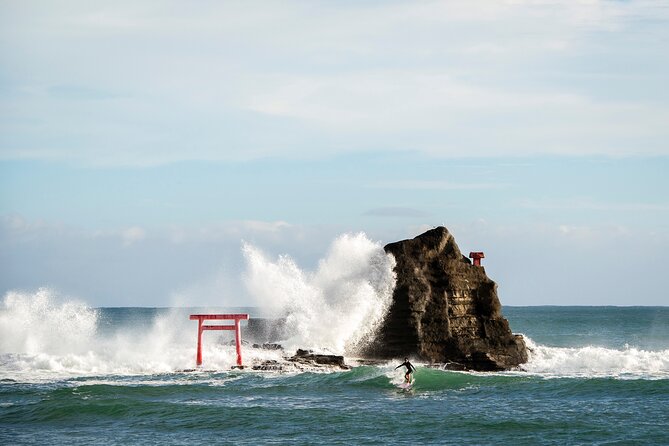They say that ‘patience is a virtue,’ and nowhere is this more evident than in the art of bonsai cultivation and washi papermaking.
A visit to the Bonsai and Washi Museum in Tokyo offers a glimpse into the meticulous craftsmanship and deep cultural significance of these traditional Japanese crafts. From the carefully pruned miniature trees to the delicate handmade paper, this immersive experience promises to transport visitors into a world of beauty and tradition.
But what exactly awaits those who embark on this journey? And how can one fully appreciate the artistry behind bonsai and washi paper?
Quick Takeaways
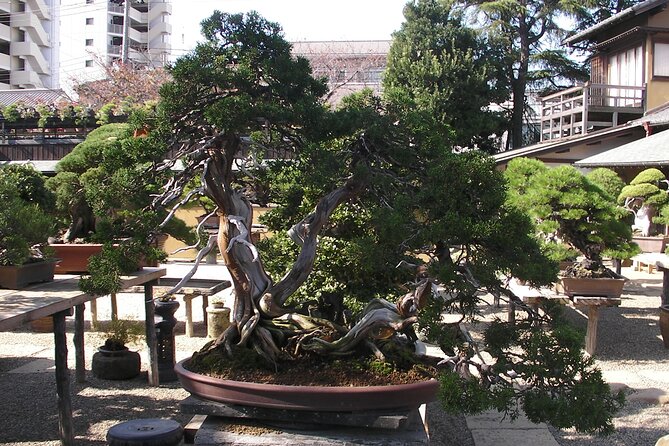
- The Bonsai and Washi Museum in Tokyo offers a unique opportunity to explore the art of bonsai and the traditional craft of washi papermaking.
- Visitors can learn about the rich history and cultural significance of bonsai and Washi papermaking in Japanese society.
- The museum showcases a variety of carefully pruned and shaped bonsai trees, demonstrating the intricate techniques used in their cultivation.
- Interactive workshops allow visitors to try their hand at bonsai pruning or create their own Washi paper, providing a hands-on experience of these traditional arts.
Overview of the Bonsai and Washi Museum Visit
The Bonsai and Washi Museum visit in Tokyo offers a unique opportunity to explore the art of bonsai and the traditional craft of washi papermaking.
Visitors can explore the history of bonsai and witness the intricate techniques used in its cultivation. Bonsai, which originated in China and later spread to Japan, is the art of growing miniature trees in containers. The museum showcases a variety of bonsai trees, each carefully pruned and shaped to create a harmonious and natural appearance.
Plus, visitors can learn about the traditional methods of making washi paper, a technique that has been passed down through generations. These techniques involve the use of natural fibers and meticulous craftsmanship to create durable and beautiful paper.
The Bonsai and Washi Museum visit is a must-see for those interested in the rich history and cultural significance of these traditional arts.
Transportation Details for the Experience
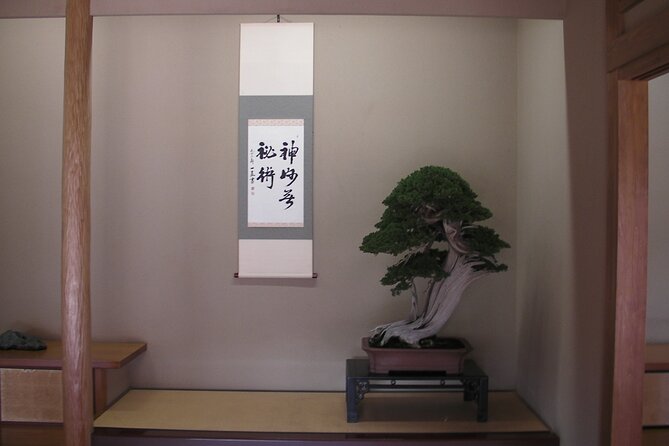
Visitors participating in the Bonsai and Washi Museum visit in Tokyo can easily access the experience with private transportation provided from Kasai Station. The meeting point is at the main gate of Kasai Station at 09:30 AM. The tour ends at Ozu Washi in the Nihonbashi area. However, alternative meeting arrangements can be made if participants are unable to come to Kasai Station. It is important to note the cancellation policy and refund details apply. Changes made less than 24 hours before the start time will not be accepted. In case of unfavorable weather conditions, alternative arrangements or a refund will be offered. For any questions or concerns, visitors can contact the Viator Help Center.
| Meeting Point | Kasai Station, 5 Chome-43 Nakakasai, Edogawa City, Tokyo 134-0083, Japan |
|---|---|
| Start Time | 09:30 AM |
| End Point | Ozu Washi, 3-chōme-6-2 Nihonbashihonchō, Chuo City, Tokyo 103-0023, Japan |
| Pickup Details | Contact for alternative meeting arrangements if unable to come to Kasai Station |
| Cancellation Policy | Changes made less than 24 hours before start time will not be accepted. Weather conditions may affect the experience, alternative arrangements or refund will be offered. Contact Viator Help Center for any questions or concerns. |
Lunch Arrangements During the Visit
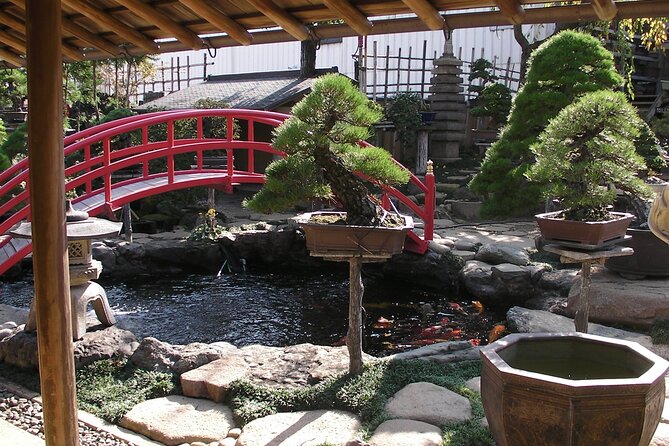
During the visit to the Bonsai and Washi Museum in Tokyo, participants can enjoy a delicious lunch provided as part of the experience. The lunch options are designed to showcase traditional Japanese cuisine and offer a unique dining experience.
Here are some of the alternative lunch options available:
- Sushi tasting: Participants can savor a variety of fresh and expertly prepared sushi rolls, nigiri, and sashimi.
- Bento box: A traditional Japanese lunchbox filled with a selection of seasonal dishes, including rice, grilled fish, pickled vegetables, and miso soup.
- Tempura set: Enjoy crispy and lightly battered tempura, served with dipping sauce and accompanied by rice and miso soup.
- Ramen: Indulge in a steaming bowl of ramen noodles in flavorful broth, topped with slices of pork, green onions, and other toppings.
- Okonomiyaki: Experience the savory delight of a Japanese pancake filled with cabbage, meats, seafood, and topped with a tangy sauce and mayonnaise.
These lunch options will provide a satisfying and authentic culinary experience during the visit to the Bonsai and Washi Museum.
Inclusion of All Fees and Taxes
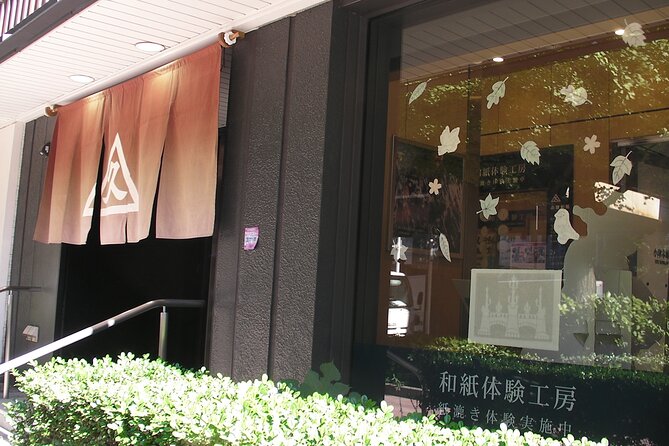
As participants enjoy their lunch options at the Bonsai and Washi Museum in Tokyo, they can rest assured that all fees and taxes are included in the experience. This ensures a hassle-free visit without any additional costs or surprises. The inclusion of all fees and taxes allows visitors to fully enjoy the beauty of bonsai and traditional Japanese papermaking without worrying about any extra expenses. The table below provides a breakdown of the fees and taxes included in the visit:
| Included in the Experience |
|---|
| Private transportation from Kasai Station for 650 JPY |
| Lunch provided |
| All fees and taxes covered |
| Visit to Bonsai and Washi Museum |
| Expert guide throughout the experience |
With these inclusions, participants can focus on enjoying the unique cultural experience of the Bonsai and Washi Museum without any financial concerns.
Highlights of the Bonsai and Washi Museum
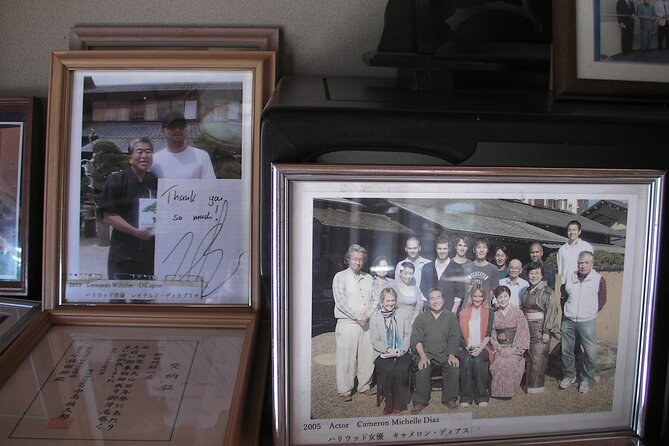
The Bonsai and Washi Museum offers a captivating experience for visitors to explore the artistry and cultural significance of bonsai trees and traditional Japanese papermaking. Here are the highlights of the museum:
- History of Bonsai: Visitors can learn about the rich history of bonsai, dating back over a thousand years. The museum showcases a diverse collection of bonsai trees, each with its own unique story and style.
- Traditional Japanese Papermaking Techniques: The museum provides a fascinating insight into the ancient art of Washi papermaking. Visitors can observe skilled artisans as they demonstrate the meticulous process of creating Washi paper by hand.
- Exquisite Bonsai Displays: The museum features stunning displays of bonsai trees, carefully curated to showcase the beauty and intricacy of each tree. Visitors can admire the miniature landscapes and delicate details of these living works of art.
- Interactive Workshops: The museum offers hands-on workshops where visitors can try their hand at bonsai pruning or create their own Washi paper. These workshops provide a deeper understanding of the craftsmanship and dedication required in these traditional art forms.
- Cultural Significance: Through its exhibits and displays, the museum highlights the cultural significance of both bonsai and Washi papermaking in Japanese society. Visitors can gain a greater appreciation for the deep-rooted traditions and artistic heritage of Japan.
Expert Guide Accompanying the Experience
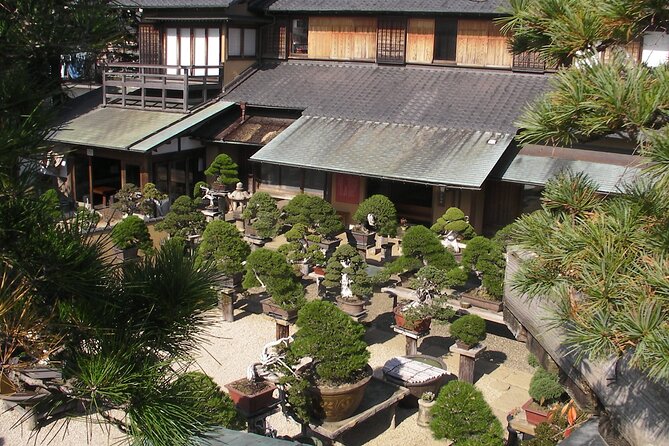
An expert guide will accompany visitors throughout their experience at the Bonsai and Washi Museum, providing in-depth knowledge and insights into the artistry and cultural significance of bonsai trees and traditional Japanese papermaking. Having an expert guide enhances the visit by offering a wealth of information and expertise that enriches the understanding and appreciation of bonsai and washi. The guide will explain the techniques used in bonsai cultivation, the history and symbolism behind different bonsai styles, and the meticulous process of making washi paper. They will also highlight the cultural significance of bonsai and washi, emphasizing their role in Japanese aesthetics, spirituality, and craftsmanship. With their guidance, visitors can gain a deeper appreciation for these ancient art forms and fully enjoy the beauty and cultural heritage of Japan.
| Benefits of Having an Expert Guide | Cultural Significance of Bonsai and Washi |
|---|---|
| In-depth knowledge and insights | Ancient art forms |
| Enhanced understanding | Japanese aesthetics, spirituality, and craftsmanship |
| Appreciation for bonsai and washi | Symbolism and history |
Meeting and Pickup Instructions
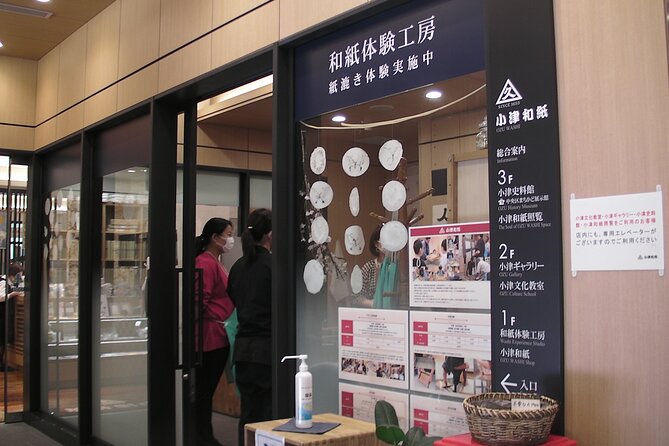
Visitors participating in the Bonsai and Washi Museum visit in Tokyo will need to meet at the main gate of Kasai Station at 09:30 AM. Here are some important instructions to keep in mind for the meeting and pickup:
- Meeting point: Kasai Station, 5 Chome-43 Nakakasai, Edogawa City, Tokyo 134-0083, Japan
- Start time: 09:30 AM
- End point: Ozu Washi, 3-chōme-6-2 Nihonbashihonchō, Chuo City, Tokyo 103-0023, Japan
- Nihonbashi area or nearby
- Contact for alternative meeting arrangements if unable to come to Kasai Station
It is essential to be punctual and arrive at the designated meeting point on time. In case of any changes or difficulties, visitors should contact the organizers for alternative meeting arrangements.
It’s also important to note the cancellation policy, as changes made less than 24 hours before the start time won’t be accepted. Visitors can contact the Viator Help Center for any questions or concerns regarding the meeting and pickup instructions.
Pricing and Terms & Conditions for the Visit
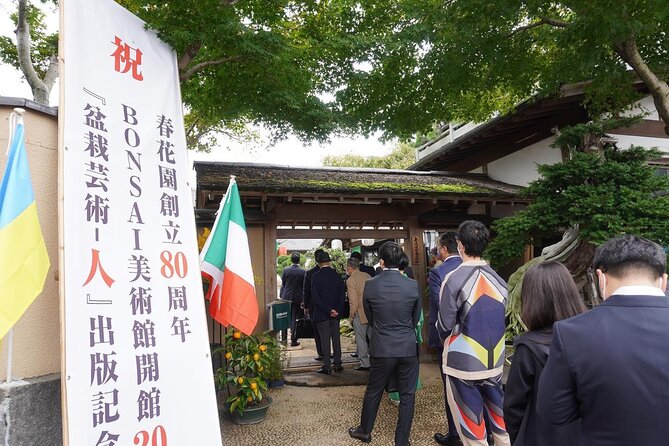
Continuing the discussion from the previous points, participants of the Bonsai and Washi Museum visit in Tokyo can now explore the pricing and terms & conditions for this experience.
The price for the visit starts from $155.31, but it’s important to note that pricing is subject to change.
Terms and conditions apply to the experience, and it’s recommended to refer to Viator’s terms and conditions for more details.
In terms of the refund policy, changes made less than 24 hours before the start time won’t be accepted. Plus, weather conditions may affect the experience, but alternative arrangements or a refund will be offered.
If participants are unable to come to the designated meeting point at Kasai Station, they can contact for alternative meeting arrangements.
For any questions or concerns, assistance is available through Viator Help Center.
Common questions
Are There Any Age Restrictions for the Bonsai and Washi Museum Visit?
There are no age restrictions for the Bonsai and Washi Museum visit. Visitors of all ages can enjoy the experience. As for lunch options, it is provided as part of the package.
Can I Bring My Own Lunch Instead of Having the Provided Lunch?
Yes, visitors have the option of bringing their own lunch instead of having the provided lunch. The museum visit includes lunch, but outside food is allowed if preferred.
Are There Any Additional Fees or Taxes That I Need to Be Aware Of?
There are no additional fees or taxes for the Bonsai and Washi Museum visit. The provided lunch is included in the package. Age restrictions may apply. Unique highlights include an expert guide throughout the experience.
What Are Some of the Unique Highlights of the Bonsai and Washi Museum?
Some unique highlights of the Bonsai and Washi Museum include demonstrations of intricate bonsai techniques and the opportunity to learn about the traditional Washi paper making process. Visitors can gain insight into the artistry behind these ancient crafts.
Can I Request a Specific Expert Guide for the Experience?
Yes, visitors can request a specific expert guide for the experience. They can contact Viator’s Help Center to make this request and receive further assistance regarding their guide preference.
The Sum Up
To sum it up, the Bonsai and Washi Museum visit in Tokyo offers a unique and immersive experience to explore the traditional Japanese crafts of bonsai cultivation and washi papermaking.
With an expert guide by your side, you’ll gain a deeper understanding of the history and techniques behind these ancient art forms.
The museum showcases a stunning collection of bonsai trees and offers hands-on demonstrations of washi papermaking.
Don’t miss this opportunity to learn about the beauty and tradition of bonsai and washi paper in the heart of Tokyo.


